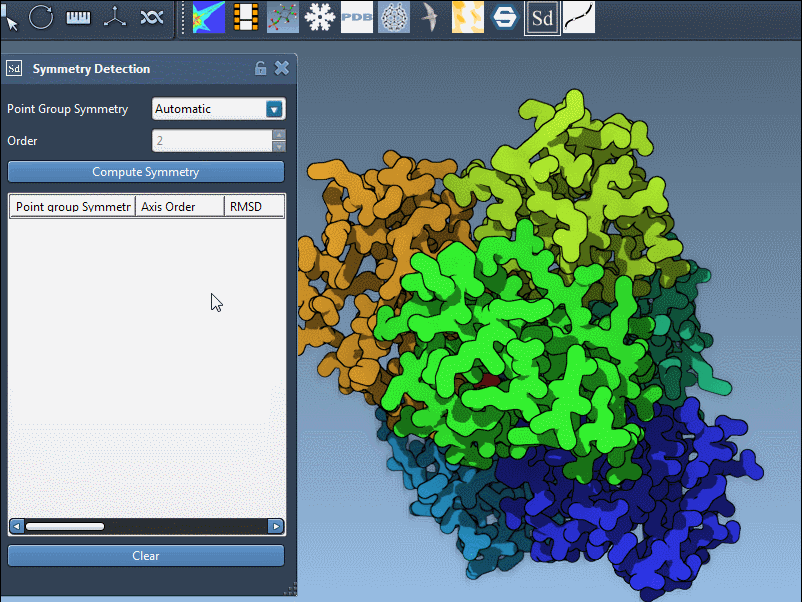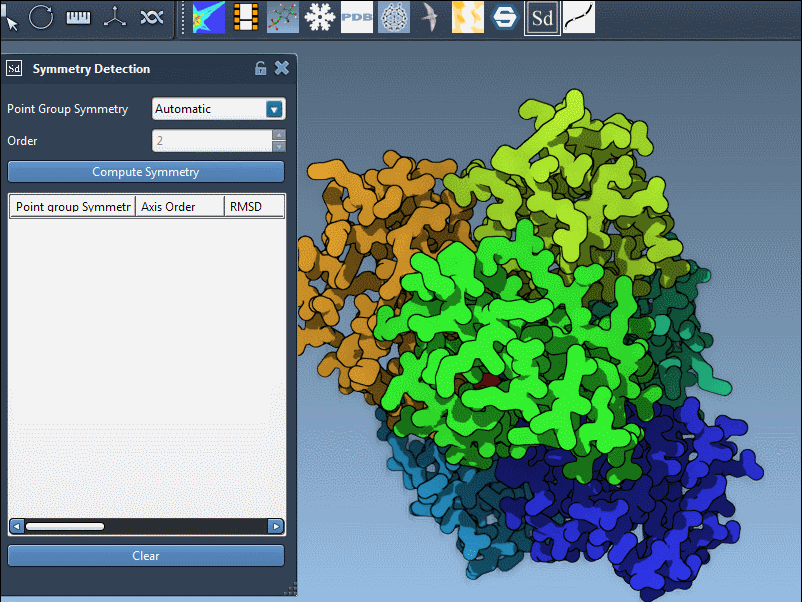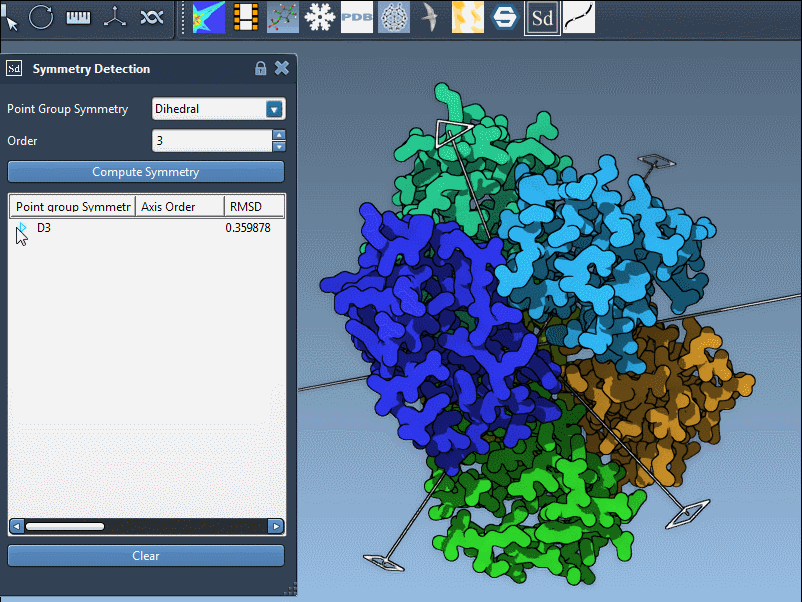When working with large protein complexes or viral capsids, understanding and leveraging their symmetry can significantly simplify your structural analysis and simulations. The Symmetry Detection extension in SAMSON automatically identifies possible symmetry groups in biological assemblies — but what happens when it gives you more than one option?
For complex structures, it’s common to detect multiple plausible symmetry groups. Selecting the most relevant one is crucial, especially when aiming to reduce system size or identify functionally important subunits. This blog post walks you through how to make the right choice, based on symmetry quality and biological relevance.
Why multiple symmetries?
Large molecular assemblies often exhibit approximate symmetries. The algorithm evaluates multiple group candidates that might fit the structure with different degrees of precision. It’s not always obvious which group reflects the most biologically meaningful symmetry.
Evaluating options
When multiple symmetry groups are presented, here’s how to decide, using the tools already built into the extension:
- Start with RMSD: Root Mean Square Deviation (RMSD) is calculated for each symmetry group. It reflects how well the proposed symmetry matches the actual structure. Prefer groups with smaller RMSD values — these represent better approximations.
- Highlight the axes: Click on a group to highlight its main symmetry axis in the SAMSON viewport. This helps you visually judge the symmetry orientation relative to structural features you care about.
For example, the protein complex 1B4B was analyzed in the documentation. One of the detected symmetries was dihedral of order 3 (D3). The extension allows users to quickly visualize its primary axis, helping confirm whether the D3 symmetry fits with expectations or known biological behavior.

Manual selection for confidence
If you’re working with a system whose symmetry has been previously characterized — say from crystallographic data — you can also manually choose the expected symmetry. Use the dropdown menus in the app to select the group and order, then compute and confirm visually.

Digging into the details
Each symmetry group may contain multiple axes. Expand the group in the UI to examine individual axes, along with their RMSD values. Here’s what you can do:
- Single-click an axis to highlight it in the viewport.
- Double-click to align the view along that axis — perfect for exploring geometric arrangements and verifying repeating units.

Why this matters
Choosing the right symmetry group enables you to:
- Focus simulations on a smaller, asymmetric unit.
- Design mutations that exploit repeating structural motifs.
- Interpret experimental data through validated symmetry assumptions.
To learn more about symmetry handling and explore additional examples, head over to the full documentation: Symmetry Detection in SAMSON.
SAMSON and all SAMSON Extensions are free for non-commercial use. You can download SAMSON at https://www.samson-connect.net.





